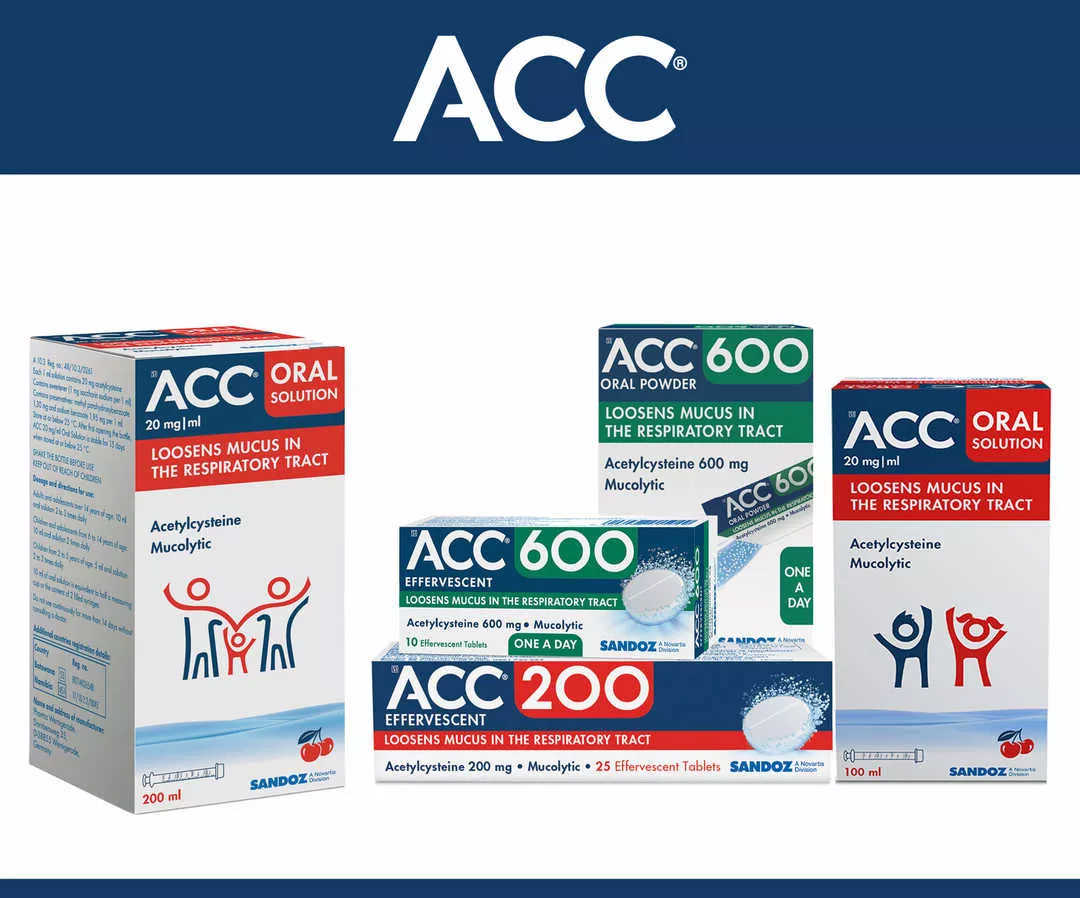TYPES OF SINUSITIS
There are two main types of sinus infections or sinusitis: acute (short-term) sinusitis and chronic (long-term) sinusitis.1,2 Both acute and chronic sinusitis can be caused by a variety of different factors.1,2
Acute sinusitis:1
If you get sinusitis often (more than 4 times a year), it’s known as recurrent acute sinusitis.1 Chronic sinusitis:
|
Risk factors for sinus infections
If you’re prone to allergies like hay fever, or if you have a history of upper respiratory tract infections, you have a higher risk of getting an acute sinus infection.1
If you have a weak immune system or a history of allergies and/or asthma, you may be more vulnerable to chronic sinus infections.2 Smoking can also increase your risk of chronic sinusitis.2
The treatment for acute and chronic sinusitis will depend on what caused the infection, and how severe the symptoms are.1,2
Find out more about how to treat the symptoms of sinusitis.

ACC® relieves mucus congestion in the airways1-3

| References |
|---|
|
| Sidebar References |
|---|
|
[S1] ACC® 20 mg/ml Oral Solution. Reg. No.: 48/10.3/0261. Composition: Each 1 ml of ACC 20 mg/ml ORAL SOLUTION contains 20 mg acetylcysteine. ATC Code: R05C B01.
[S1] ACC® 200 (effervescent tablets). Reg. No.: 29/10.2.2/0753. Composition: Each ACC 200 effervescent tablet contains: 200 mg acetylcysteine. Pharmacological Classification: A10.3 Medicines acting on the respiratory system – other.
[S1] ACC® 600 (effervescent tablets). Reg. No.: 45/10.3/0229. Composition: Each effervescent tablet contains 600 mg acetylcysteine. [S1] ACC® 600 ORAL POWDER. Reg. No.: 51/10.3/0816. Composition: Each sachet contains 600 mg of acetylcysteine. ATC Code: R05CB01.
For full prescribing information refer to the Sandoz Professional Information approved by the South African Health Products Regulatory Authority (SAHPRA).
Contact Us
Sandoz SA (Pty) Ltd, Reg. No. 1990/001979/07,
Magwa Crescent West,
Waterfall City,
Jukskei View,
Midrand,
2090.
Tel: +27 (11) 347 6600.
SANCAL Customer Call Centre: 0861 726 225.
Reporting of AEs:
https://pvi1j.solutions.iqvia.com or [email protected]